How To Turn Epoxy Into Blue Granite
👈
Here's our color recipe in the video:
- Metallic Powders
- Blue Earth
- Crater Lake Blue
- Blue Green
- Gold Dust
- Yellow Pearl
- White
- Spray Paints
- White
- Black
- Seaside
- Navy Blue
- Spa Blue
- Dyes
- White
Step #1: Apply Colored Wash Coat
For this recipe, we're starting with an MDF (Medium Density Fiberboard) substrate and we’re going to coat it with a 1oz/sqft batch of Stone Coat Countertops Epoxy mixed with Yellow Pearl Metallic Powder. Mix the epoxy for at least 2 minutes using a drill and then thoroughly mix in the metallic powder. Pour the tinted epoxy in the middle of the project and spread over the surface using a gloved hand or a mixing stick, working from the center outward until the entire surface and edges are covered.
Step #2: Mix Your Epoxy And Colors
Mix at least 3 ounces per square foot of either our Stone Coat Countertops Epoxy or, for greater UV resistance, our Art Coat. We're going to mix the epoxy for at least two minutes using a drill, making sure to mix the epoxy on the bottom and sides of the mixing bucket. Once the epoxy is thoroughly mixed, we'll distribute it into plastic cups (one per additive color) and individually mix our color additives with the epoxy.
Step #3: Apply The Exotic Pour
Combine (without manually mixing) most all of the colored epoxy cups--one by one--back into the mixing bucket in a random order. You can also add a short spray of spray paint between colors for more exotic melding, if spray paint is in your recipe. It is a good practice to leave a portion in a few epoxy cups to be used for colored veins later. Remember, do not manually mix the exotic pour while it's in the bucket. Let the colors mix and move on their own. Next we're going to pour out the combined colors onto the project. You can do this in whatever manner suits your project best. A few exotic pour techniques are: pouring gentle circles across the surface, making quick zigzags or even a slow pour in a line for a honey-like drizzle pattern. The most important part is to get creative, loosen up, try new techniques and have fun! This is Stone Coat Epoxy in action!
Step #4: Enhancing The Exotic Pour
At this point you can even add more exotic pours or drizzle veins with leftover epoxy or--if possible--tilt the entire project to get your exotic pour flowing around. You can create at your leisure with our long open-working time. A quick way to add strong veins using white and black spray paint is to spray a little on the end of a paint stick and drag it through the project in a natural-looking line. Use a propane torch or a heat gun to feather out these veins and make them look even more natural.
Step #5: Granify With Alcohol And Spray Paint (Optional)
As an optional step, you can create a natural-looking granified effect very quickly using 91% isopropyl alcohol (in a spray bottle) and spray paint (usually gloss black or white spray paint). Cover an area of the project in the spray paint and spray the alcohol over the spray-painted area. You can spray as much or as little alcohol as desired to get the fracturing effect you want. Then put down the spray bottle and watch the magic happen! This can also be done without the spray paint for a more subtle effect. For even more interest, you can take half a packet of metallic powder and pour it into a spray bottle, then pour in 8-12 ounces of 91% isopropyl alcohol and use this instead of pure alcohol. Just be sure to shake well and perform test sprays away from the project every time before spraying.
Step #6: Cleaning Up The Exotic Pour
Step back and examine your exotic pour to look for any details that stand out or don't look right. You can move the epoxy around with a gloved hand or paint stick or use a propane torch, heat gun--or even a hair dryer--to fix these problem areas. Please be aware of whether the epoxy is heated before touching, even while wearing gloves. Safety first. The epoxy will be dripping over the edges at this point. Use a gloved hand to rub these drips into the edge for better adhesion. If more epoxy is needed on the edges then you can even scoop up some of the puddles forming under the project and use that. Torch the entire surface using a propane torch to pop any bubbles and help the flow of the epoxy before leaving it to dry.
Step #7: Clear Coat Or Ultimate Top Coat
Once the color coat is all dry, your new Stone Coat Countertop is ready for either the clear coat or the Ultimate Top Coat for Ultimate scratch resistance and a natural sheen level! Click the button below or go to https://www.stonecoatcountertops.com/over-old-tops#clear-coat to learn how. You got this!
